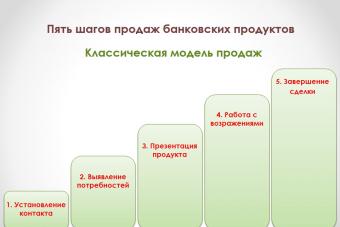How to organize the prevention of dental diseases? Why does caries, pulpitis, periodontitis develop? How to get rid of plaque and why is fissure sealing performed?
What hurts your teeth?
Dental diseases can be divided into two groups:
- Congenital anomalies most often develop due to women's health problems during pregnancy, as well as against the background of taking various medications(tetracycline teeth). Deficiency of calcium and other useful microelements also negatively affects the formation of the baby's teeth. Genetic predisposition plays an important role here.
- Acquired diseases - those that a person has acquired throughout life. The reasons for the development of such pathologies are:
- an excess of fluoride in water and foods,
- mechanical damage teeth and gums
- poor hygiene oral cavity and, as a result, the formation of plaque (this favorable environment for the reproduction of pathogenic microflora),
- taking certain medications adversely affects the condition of the teeth and oral mucosa,
- untimely treatment of caries and gum disease.
Common dental diseases and their causes
|
Disease |
Causes and features |
|
The reason is poor quality oral care. As a result, bacteria begin to actively corrode the enamel. If caries is not cured by initial stage, the infection will penetrate deep into the tooth to the pulp, resulting in pulpitis. |
|
|
Occurs as a result of untimely or poor quality treatment carious lesions of the teeth. Pulpitis can also be the result of a pulp burn when treating a tooth with a bur (if the doctor does not properly cool the tooth while working with a bur). The nerve can also be damaged due to trauma to the tooth (large chip, fracture). |
|
|
Gingivitis |
Inflammation of the gums, which is manifested by bleeding and painful sensations. The reason for the development of gingivitis is the accumulation of plaque, poor oral hygiene. , the reason for this is hormonal changes in organism. |
|
Periodontitis |
With periodontitis, the necks of the teeth are exposed, the gums begin to bleed, the teeth stagger. There can be many reasons: plaque, malocclusion, taking certain medications, unsuccessful dentures. |
|
Plaque and calculus |
Because of insufficient hygiene plaque accumulates on the teeth, which gradually turns into stone. This main reason almost all dental diseases. Arises bad smell, bleeding, an inflammatory process develops. |
Basic principles of prevention
Prevention of dental diseases - whole complex measures aimed at strengthening teeth and gums and preventing the accumulation of plaque and tartar:
- Correct balanced diet, moderate use sugar and products harmful to enamel.
- Consumption of dairy and dairy products.
- Regular visits to the dentist 2 times a year for preventive examinations.
- Timely treatment of caries and other dental diseases.
- Regular preventive cleaning of teeth (removal of plaque and tartar).
- Brushing teeth twice a day.
- Usage aids for oral hygiene: dental floss, floss, irrigator, mouth rinses.
- Timely.

- caries prevention
Fissures are convolutions on the chewing surface of the teeth, it is on them that plaque lingers and the carious process begins to develop. There is a special procedure for sealing these convolutions - fissure sealing, which provides reliable protection tooth from caries.
For the procedure, special materials are used - silanes, which contain active fluorine. This allows for additional strengthening of the tooth. The material fills the fissure along its entire length and depth. After preliminary preparation of the tooth, the material is applied from a tube, after which it hardens under the light of a special lamp. The procedure is effective if it is carried out on a tooth that appeared no more than six months ago.
Irrigator - a faithful assistant on the way to healthy teeth
Which allows you to clean your teeth from plaque in the most inaccessible places. The principle of operation of the irrigator is based on a thin jet of liquid, which is formed under high pressure. The jet washes away plaque from the interdental spaces, cleans the tongue and gums.
Instructions for use of the irrigator involves the use of various antiseptic solutions, which allow to destroy the infection and prevent the development inflammatory process. This effective method prevention of dental diseases, since a conventional brush cleans only 30% of plaque, 70% remains in hard-to-reach places.
The irrigator cleans as much as possible possible number raid. In addition, it massages the gums, stimulating blood circulation in the tissues, thereby strengthening them. The use of an irrigator is recommended for patients with braces, dental implants, crowns, bridges and other types of prostheses.
PREVENTION OF DENTAL DISEASES
TOOTHBRUSH. Dental care starts with choosing a toothbrush. As a brush, you can use freshly cut young shoots of pear, linden, orange trees, eucalyptus, oak, celery stalk, carrots, blackcurrant shoots, viburnum, mountain ash, lemongrass, cedar 15 - 18 cm in length and 5 - 6 mm in diameter. Chew one end of it. After 2 - 3 times use, this "brush" is thrown away.
- DENTIFRICE. You can use the factory one, but you need to add crushed alum up to 10% to it. A powder of 10% alum and 90% ginger can be used. Mix, grind and rub the teeth with a brush against the roots. All impurities are removed. And if we add the use of garlic to such a cleansing in the morning on an empty stomach and in the evening before going to bed, then not a single type of infectious microorganisms can withstand such an attack.
- DENTAL HYGIENE. You should brush your teeth in the morning and in the evening. To do this with toothpaste or yogi paste: pour a few drops of vegetable or olive oil, add a pinch of very fine sea salt and rub (enough for one time). Remove food debris between the teeth, dip the index and middle fingers and begin to lightly massage the teeth and gums in the longitudinal direction; upper jaw predominantly from top to bottom, and lower jaw- upwards. Don't forget to brush your teeth with inside. If your gums are bleeding and the necks of your teeth are exposed, massage in the direction from your gums to the necks of your teeth. Continue brushing your teeth until you hear a sound like that, which is produced by wet fingers sliding on the glass, this is a sign of clean teeth. The duration of the procedure is about 2 minutes. During massage, you remove dying cells of the oral mucosa, and salt prevents the formation of tartar. This heals inflamed, soft and bleeding gums and maintains healthy condition teeth.
- MOUTH RINSE. Freshly secreted saliva is the best modern antiseptic ( antimicrobial agent) of the oral cavity, as it contains enzymes that digest starch, which is often deposited on the teeth. It is also strong enough in its alkaline reaction to neutralize oral acids that cause damage to teeth. For rinsing the mouth after eating, it is good to use clean water 3-4 times a day. When sick salivary glands make a poultice on the lower jaw with crushed calendula flowers.
- CLEANING THE LANGUAGE. When talking or communicating with people, you can often smell a bad smell. It arises from the sediment that collects on the root of the tongue. Its root may be covered with a mass of the thinnest remnants of a dilapidated film of the epithelium, which extends forward to the tip of the tongue and creates a visible coating. To clean the tongue, you need to spend 2 minutes and it is recommended to use a wooden spoon. Stand in front of a mirror and start cleaning your tongue with a scraper, moving from the root of the tongue to the tip from the inside out, but not in the opposite direction. During this procedure, you need to rinse your mouth large quantity water. At the end of the procedure, you need to lightly rub the tongue on the inside with a squeezed piece of lemon or oil. It's good for refreshing your mouth.
- PALATE CLEANING The palate is cleaned after brushing the teeth and tongue, washing it with water, using thumb right hand. Long chewing of apples has a good effect on the purity of the palate. Finishing the procedure, rinse your mouth cold water, preferably lightly salted. If you have the opportunity, it is very good to breathe through your mouth, opening it to the sun, especially the morning.
SPECIAL NOTES
FOLK REMEDIES FOR THE PREVENTION OF DENTAL AND MOUTH DISEASES
To prevent the formation of tartar, prepare strong linden tea (2 tablespoons of flowers are boiled for 5 minutes in 0.5 water) and dissolve a grain of potassium permanganate in it. Then 4 tbsp. pour spoons of this solution into 1 glass warm water and use as a mouthwash.
From the tartar on the teeth, you need to eat more strawberries and lemons.
To remove tartar, take 30 g of the bark of young branches walnut and cook for 15 minutes in 1 glass of water. To remove the stone, moisten the toothbrush with this decoction and brush your teeth 2-3 times a day for 5 minutes. For prevention, do this 2 times a month.
With tartar, take 4 tbsp. spoons lime blossom and dry sunflower baskets (without seeds), pour 1 liter of water, cook for 30 minutes. Brush your teeth and rinse your mouth with this cold decoction. The decoction softens and removes stones on the teeth.
THE MOST USEFUL PLANTS AND FRUITS FOR STRENGTHENING TEETH
Calamus, meadow geranium, St. John's wort, wild strawberry, calendula, corn, flax, lemon, linden, onion, cucumber, dandelion, comfrey, plantain, turnip, garlic, pistachio, spinach, bird cherry.
If personal hygiene of the oral cavity is not observed, cases of dental (and other) diseases become more frequent. Besides proper care behind the teeth, in prevention important role plays good nutrition.
Diseases from the section of dentistry and otorhinolaryngology often manifest themselves in connection with improper care of the oral cavity. Babies can easily get infected. Some pathogenic bacteria capable of destroying tooth enamel, penetrating into the root of the tooth, and can cause diseases of neighboring growing teeth. Doctors recommend that you start caring for your oral cavity even before the appearance of milk teeth.
Prevention of oral diseases begins with basic hygiene. Since only doctors (dentist, ENT) can analyze the condition of the teeth and mucous membranes, going to the clinic for a physical examination is considered next step to preventive disease control measures.
Early diagnosis of diseases protects a person from unnecessary pain and long-term treatment.
In young children, untimely hygienic and curative elimination pathogens (fungi, bacteria) in the mouth can cause, in addition to childhood stomatitis, inflammation of the nasopharynx, middle ear (otitis media). Physiological features predispose to their appearance respiratory tract in children, structure eustachian tube(the ear canal from the pharynx).
The fundamental principles of disease prevention and control are as follows:
- systematic oral hygiene with the selection of care products by age;
- regular hygiene of tools (toothbrushes, floss, teether toys, gum coolers for children, etc.);
- careful eating, excluding injury to the membranes of the gums, teeth, tongue, inner side of the lips, cheeks.
The main means of caring for the oral mucosa and teeth are as follows:
- toothbrush (recommended to change every 3 months);
- dental floss;
- toothpicks;
- toothpaste, powder, gel (preferably mineral-containing, herbal-based);
- elixir for rinsing the mouth;
- chewing gum without sugar and extra additives;
- fluorine-containing varnish, solution;
- dental sealants damage teeth.
 Infections that settle on the mucous membrane in the mouth are removed by rinsing with a dental hygiene product. Plaque is removed mechanically from the dental shell: for babies soft brush and children's paste, adults are recommended to use medium-hard brushes, dental floss, pastes and powders.
Infections that settle on the mucous membrane in the mouth are removed by rinsing with a dental hygiene product. Plaque is removed mechanically from the dental shell: for babies soft brush and children's paste, adults are recommended to use medium-hard brushes, dental floss, pastes and powders.
Preventive measures for babies
After feeding, newborn babies clean the cavity with a finger brush or a terry cloth. They are moistened with chilled boiled water, and then wipe the children's gums, tongue with light massaging movements.
Gum massage is useful throughout life: bleeding disappears, blood supply improves.
Until it's time for teething, the bacteria in the baby's mouth are waiting for a favorable moment for their development. As soon as enamel becomes available to them, they combine with sucrose coming from food and intensively produce plaque. After teething, they switch to toothbrushes (instead of water paste).
Proper care of the teeth of a child after a year
In the pharmacy, you can buy children's toothbrushes with rubber or regular very soft bristles. All instruments personal hygiene mouth are kept clean, often disinfected with a solution of potassium permanganate or furatsilina.
In cleansing the mucous membrane and teeth, the child tries to take a direct part. He copies the movements of the parents, plays during the procedure. Adults imperceptibly control the process, check whether all the teeth have been cleaned.
Recommendation of dentists: in order not to injure the delicate children's gums, it is better to clean it from the bottom up (from the root to the top of the tooth), and upper surface teeth are cleaned by intensively moving the brush from side to side.
Cleaning takes about 5 minutes in the morning and evening.
Researchers argue that the lack of treatment of caries in milk teeth in children provokes its development into chronic form. This negatively affects the integrity of permanent teeth.
Everyone knows that the cause of caries is sweet food, especially factory confectionery. However, dental deformities also play an important role in its development - crowding or sparseness of growing teeth, malocclusion. A dentist will provide qualified advice on methods for eliminating such defects.
Preventive measures for children over 6 years of age
To correct the bite, the dentist prescribes the child to wear braces. Pathogenic microbes also develop on them, in addition, the design can scratch the membranes of the buccal mucosa and tongue. For the prevention (while wearing them) of diseases in children, additional therapeutic and prophylactic pastes, ortho brushes and brushes, superfloss threads, massagers are purchased.
Prevention of oral diseases in schoolchildren implies following the rules of hygiene, a balanced diet and the fight against bad habits.
Hygiene involves brushing your teeth 2 times (morning and evening), rinsing with a dental agent every time after eating. The correct balance of minerals and vitamins in the child's body is also important. It is supported by good nutrition and properly selected hygiene products.
Exclusion from the diet of fast food, convenience foods, sweets with confectionery icing, cream, sweet carbonated drinks and similar foods will help preserve the health of not only the oral cavity, but the whole body.
It is important to get rid of bad habit bite your nails, hard inedible objects (pen caps, for example), crack nuts with your teeth, and so on.
At lunchtime, teeth are cleaned by chewing unsweetened chewing gum for 3-5 minutes. Children school age With preventive purpose instruct doctors and parents on proper nutrition and oral care. A well-established habit lasts a lifetime.
Adult oral care
An adult has already formed a strong habit of proper care of the oral mucosa and teeth. For the prevention of diseases, he can choose among a large assortment hygiene products, services dental clinics(fluoridation, whitening, coating of the tooth shell with fluoride varnish). In old age, special care is given to dentures, false jaws. They are cleaned just as thoroughly as your own teeth.
Common diseases of the oral cavity
A person who has the habit of cracking the hard shell of nuts, seeds, or someone who likes to chew on a pencil, exposes the enamel to a large unnatural load, which causes it to split. Pathogenic pathogens penetrate the microcrack, destroying the tooth from the inside. 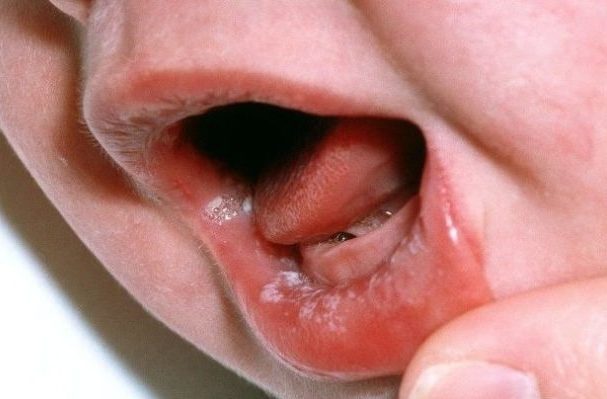
Frequent illnesses:
- caries (destruction of enamel);
- gingivitis (bleeding gums);
- stomatitis (sores with white coating on the mucosa);
- pyoderma for children (symptoms are similar to stomatitis, the causative agent is strepto- or staphylococcus aureus);
- mechanical destruction of the tooth (enamel, root);
- tartar;
- dryness of the mucous membrane in the elderly (xerostomia);
- periodontitis (inflammation of the gums near the root of the tooth);
- periodontitis (inflammation of the gums);
- flux ( purulent process in the mouth due to infection of the wound).
Tartar is formed in places of poor cleaning of plaque (roller on the tooth in the border area with the gums). Its untimely removal allows the petrified plaque to open the way for infections to the root of the tooth, breaks the tight fit of the gums to the enamel.
Conclusion
Regular visits to the dentist help to reduce the risk of diseases of the mucous membrane in the mouth, as well as preventive measures. main role plays the perseverance of the person himself in observing personal hygiene, and in children - the perseverance of their parents, patiently teaching their kids all the rules individual care behind the teeth.
Few people realize that the prevention of dental diseases is important not only for their beauty. Of course, a beautiful and well-groomed appearance is impossible without beautiful and well-groomed teeth, and rotten teeth can completely ruin the impression of a person. However, the prevention of dental diseases is also important because the teeth and oral cavity are the initial section of the digestive tract. digestive tract, conventionally speaking, is a continuous tube throughout. Therefore, diseases in any part of it necessarily affect the rest. Simply put, bad teeth always lead to diseases of the digestive system.
What is included in the concept of prevention of dental diseases? Firstly, proper care for them, secondly, timely visits to the dentist, and thirdly, providing the type of food that the best way keep them healthy. Let's take a closer look at each of the points.
Daily hygiene procedures, which form the basis of dental care, are an integral attribute of a cultured person. The child must be taught that the teeth should be brushed twice a day, and the toothbrush should be changed four times a year. There are nuances that not everyone is aware of. Effective two-time brushing for the prevention of dental disease involves brushing in the evening before bedtime and in the morning after breakfast, and not before it. Changing your toothbrush is also important, otherwise it can become a hotbed of infection from a hygiene item.
A preventive visit to the dentist should be carried out once every six months in the complete absence of any complaints. When the first signs of pathology appear: pain, loss of filling, depressurization of the prosthesis, etc., the dentist should be contacted immediately. Such prevention of dental diseases will allow to detect and timely eliminate the disease on early stage when the damage is still insignificant. In addition, such a regimen of visiting the dentist is much more profitable from an economic point of view, given the difference in the price of a small filling or large-scale prosthetics.
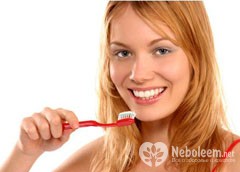 The last point, a healthy diet, is the first in importance in the prevention of dental diseases. healthy eating For the teeth, this is a balanced diet. It is important to provide them with a proper, but not excessive load in the form of a daily portion. fresh vegetables and fruits. Sufficient amount of water is needed pure water, which should not be replaced with juices, tea or coffee. Refined sugars should be kept to a minimum and, if possible, avoided altogether.
The last point, a healthy diet, is the first in importance in the prevention of dental diseases. healthy eating For the teeth, this is a balanced diet. It is important to provide them with a proper, but not excessive load in the form of a daily portion. fresh vegetables and fruits. Sufficient amount of water is needed pure water, which should not be replaced with juices, tea or coffee. Refined sugars should be kept to a minimum and, if possible, avoided altogether.
Following these three principles will keep your teeth beautiful and healthy throughout your life.
Prevention of diseases of the teeth and gums is a set of measures aimed at preventing the development and formation of dental pathologies. This direction of medicine is considered the most priority. Long-term experience of dentists shows that increasing the staff of clinics and improving dental equipment is an insufficient measure to prevent diseases of the oral cavity.
In world practice, the introduction of planned preventive measures allows you to significantly reduce the intensity and number of diseases of the dento-jaw system. These activities contribute to the average increase in the number healthy teeth in children and adolescents.
Planning methods of prevention is carried out on the basis of a study of dental morbidity in the population.
Epidemiological studies show rather early damage to the organs of the oral cavity. According to statistics, three-year-old children have 3-4 teeth affected by caries. Already by the age of six, doctors diagnose a carious process in dairy and permanent teeth(cm. ). In this category of patients, the prevalence of caries is about 50%.
Caries and gum disease in adults are found in almost all. People aged 20-65 usually have 5-6 damaged, filled or extracted teeth in their mouths. This trend is exacerbated by poor oral hygiene.
V Lately dentists have to state an increase in the number of periodontal pathologies in patients aged 18-25 years.
Many medical research confirm that with increasing age there is an aggravation clinical course soft tissue diseases of the oral cavity. At the same time, all types of gum disease are becoming increasingly difficult to treat, which is associated with a gradual decrease in height. bone tissue and the formation of a pathological periodontal pocket.
The main methods of preventing dental diseases
To prevent the development of dental pathologies can be through such techniques.
Dental education of the population
This technique includes both individual and general level. Dental education is, first of all, familiarizing the population with the rules of individual oral hygiene and highlighting the questions: “How to treat diseases of the gums and teeth?”.
The health of the oral cavity organs directly depends on the general immunity, the patient's habits and characteristics. external environment a habitat.
The main methods of dental education are lectures, seminars, talks and special educational games with children. The advantage of these methods is the direct contact of a specialist with people, which ensures high results of preventive work.

Audience lighting is also done in two main ways:
- active, when a dental specialist conducts an interview with an audience;
- passive, not requiring the presence and consultation of a medical worker.
V modern world many questions such as: “What is gum disease called?” or “How to prevent the development of pathologies of the oral cavity?” can be emphasized from mass media(radio, television and internet).
Teaching the principles of rational nutrition
In the prevention of caries and gum disease, a key role belongs to correct regimen food and healthy lifestyle life.
A balanced diet affects dental tissues in two main periods of life:
- intrauterine formation of enamel and dentin;
- after teething.
For the formation of caries-resistant hard tissues of the oral cavity, a pregnant woman should include in her diet a sufficient amount of dairy products, fruits, vegetables, vitamins and minerals.
An important role in the formation of strong and healthy teeth belongs to breastfeeding in the first year of life. In the future, dentists recommend reducing the intake of easily fermentable carbohydrates (sugar and starch).
These substances have a pronounced cariogenic effect. In addition, oral bacteria use sucrose and starch for nutrition and reproduction, which contributes to the formation of soft plaque. In such cases, the patient is waiting for the inevitable treatment of gum disease.
Strict adherence to the rules of personal oral hygiene
One of essential component preventive measures is oral hygiene. Daily brushing of teeth and regular removal of plaque stimulates the full formation of enamel. Personal hygiene products include: Toothbrush, paste (see), threads (flos) and rinses.
Cleaning of the dentition is performed using the following methods:
- Circular Method Fones. Cleaning the front surfaces of the teeth is carried out in a circular motion with closed teeth. Then, in the open position of the oral cavity, the person must clean the chewing parts of the teeth.
- Leonard technique. The essence of this method is to clean the dentition with vertical movements of the toothbrush in the direction from the tooth to the gum.
- Bass method. The head of the toothbrush is located at an angle of 45° to the vertical axis of the tooth. Cleaning is carried out with the help of vibrating movements.

According to statistics, gum disease, the treatment of which began with professional teeth cleaning, has the most favorable treatment prognosis.
Professional oral hygiene
All dental procedures, as a rule, begin with professional cleaning of the dentition, which is performed in the following ways:
- mechanical cleaning. The dentist, using special hand tools, cleans the surfaces of the tooth from hard and soft plaque.
- ultrasonic cleaning. Removal of tartar using ultrasound is the most effective and safe for enamel.
- Laser cleaning. This is the most innovative way professional hygiene oral cavity.
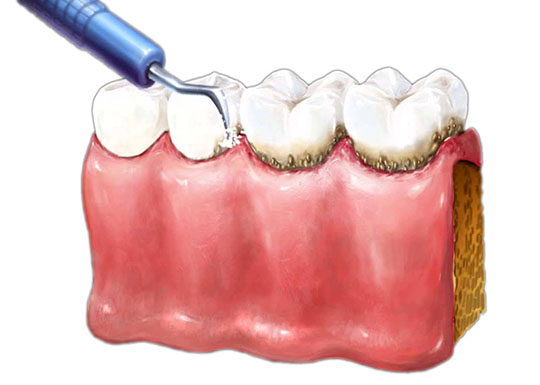
All of the above methods end with polishing the dentition with a dental brush and finely abrasive paste.
Application of fluorides
Fluoride compounds are used in dental prophylaxis in two main ways:
- systemic method - human consumption of water, milk or salt enriched with fluorides;
- Local exposure to enamel with fluoride toothpastes, gels, solutions or varnishes.
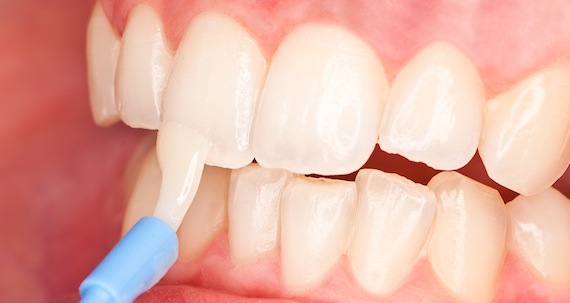
Sealing teeth with sealants
Diseases of the teeth, gums, the treatment of which requires filling carious cavity, often begin with an accumulation of bacteria and food debris on the chewing surfaces of the molars. In such cases, doctors use special sealants to prevent the development of a carious process.
Instructions for the use of such tools provide for the following sequence of manipulations:
- professional oral hygiene followed by polishing of the chewing group of teeth;
- isolation of the tooth from saliva and oral fluid with cotton swabs;
- drying the dentition and applying sealant to them in a liquid state;
- polymerization (curing) of dental material using a photopolymer lamp;
- sealant surface polishing.
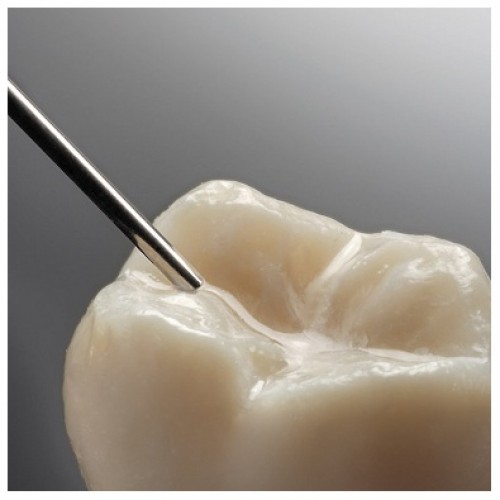
Fissure sealing is performed in children in the absence of signs of carious lesions and provides complete protection of the tooth from the spread of pathological microorganisms.
Prevention of diseases of the oral mucosa
Gum disease in adults, the treatment of which requires dental interventions, develop under the influence of external and internal factors risks.
The first group includes:
- exposure and activation of pathological microflora of the oral cavity;
- mechanical trauma of the soft tissues of the oropharynx;
- Physical damage to the mucous membrane and chemical burns.
Internal risk factors include:
- sharp drop in level defensive forces organism;
- hormonal imbalance;
- genetic predisposition;
- heavy accompanying illnesses internal organs.
The principles of prevention of mucosal pathologies are based on reducing the impact of the above risk factors.
Features of prevention in pregnant women, children and adults
Prevention of caries in a pregnant woman has two goals: to improve oral hygiene and to contribute to the full formation of the dento-jaw system in a child. In such cases medicinal herbs for gum disease are considered the most optimal method of therapy.
Already at 6-7 weeks of fetal development, the formation of tooth germs occurs. Therefore, during this period, a woman should consume enough food with high content proteins, trace elements and vitamins.
During a visit to the dentist, a pregnant woman undergoes a preventive examination of the oral cavity. The doctor is rehabilitating professional cleaning teeth, enamel remineralization and gives recommendations on hygiene care behind the teeth.
Pediatric dentistry, in which gum and tooth disease is carried out mainly in a conservative way, provides for regular preventive examinations children. The frequency of such surveys is at least twice a year. As a result, dentists sanitize such patients and teach them proper brushing skills.
For adults, the prevention of dental pathologies focuses on the timely detection of the disease and its complete cure. The price of treatment in this case will depend on the prevalence of the carious process, the number of affected or missing teeth and the presence of anomalies in the development and position of the teeth.
The principles for planning preventive measures include the following provisions:
- clarification of the key objectives of prevention;
- definition of goals and objectives;
- drawing up a list of preventive methods;
- special training of medical personnel;
- gradual introduction of preventive programs in dentistry;
- assessment of the level of prevention effectiveness.
It is possible to find out the level of effectiveness of professional work based on the results of a planned study of the dental health of certain groups of people. To do this, the dentist calculates the so-called KPU index. This indicator shows the number of carious, filled and extracted teeth in a patient.
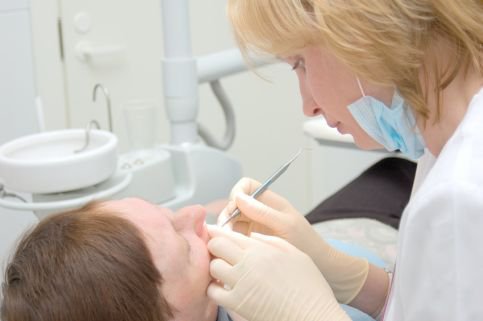
Another undoubted fact of the effectiveness of prevention is the increase in the number of people with total absence carious teeth.






